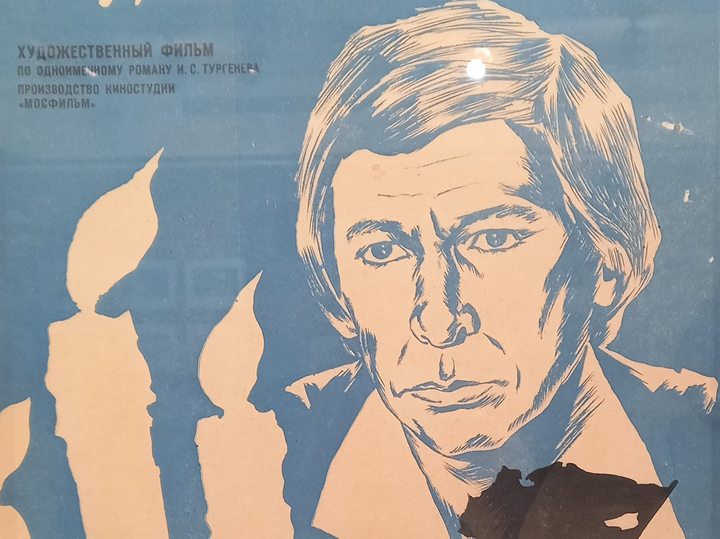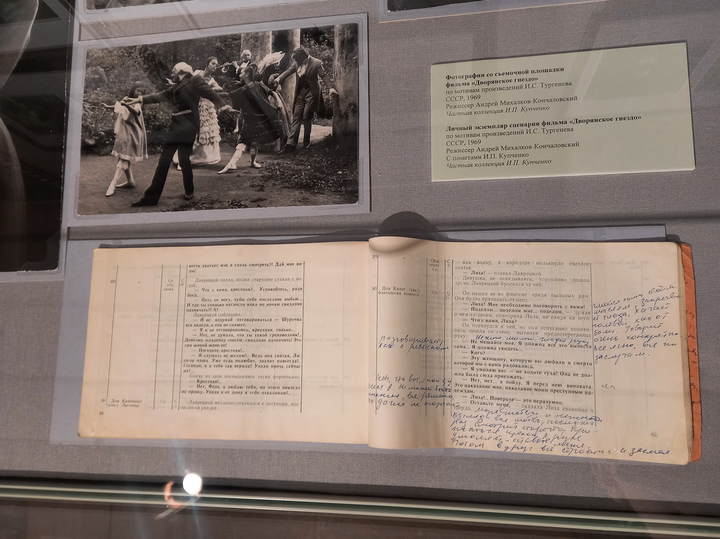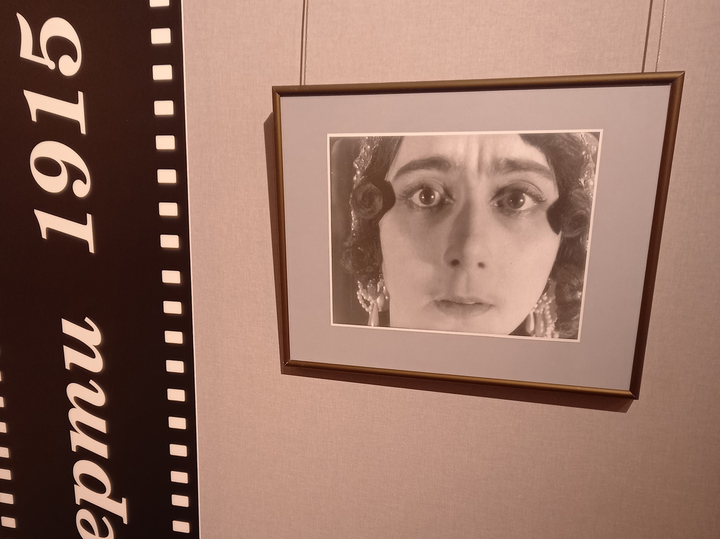Turgenev’s heroes were caught on camera
[ad_1]
An extensive filmography based on the works of the classic was shown in Moscow
The certain number of years since the birth of the classic can be celebrated in different ways. Most often, museums follow a simple path: we place in glass cases personal belongings, a dozen journal publications during his lifetime and the same number of books, reproductions of portraits of the writer and, of course, manuscripts (in almost 100% of cases they are copies, since ancient paper does not like light and unnecessary movements). Voila – the anniversary exhibition is ready, fortunately in the storerooms there will always be something that visitors have not yet seen. For the 205th anniversary of Turgenev, the Pushkin Museum decided to do something more in three halls, presenting a hundred years of filmography – from 1914 to 2014. The MK correspondent hung here for several hours.
Film adaptations of classics are an endless field for a philological researcher, but, as the situation with Turgenev showed, information about films and film artifacts are scattered across many museum institutions. Even in a writer’s “name” museum there cannot be an exhaustive completeness, so there is no way to do without collaboration.
More than a hundred films were made based on Turgenev’s works; early works from the beginning of the last century either did not survive or have survived to this day in the form of fragments, so every frame from them is priceless.
The exhibition we are talking about today was created jointly by the Moscow Pushkin Museum, the Oryol Literary Museum of Turgenev, the Spasskoye-Lutovinovo Museum, the Central Museum of Cinema, Gosfilmofond, Mosfilm, Lenfilm, Film Studio. M. Gorky, VGIK and so on, including Irina Kupchenko personally. The People’s Artist of Russia provided the organizers with a personal copy of the script for the 1969 film “The Nest of Nobles”, which was used by Andrei Konchalovsky. Moreover, this book is replete with handwritten notes by Kupchenko herself, who made her film debut with the role of Liza Kalitina.

I will deliberately break the chronology and go from modern times to the beginning of the 20th century. The latest film adaptation is “Two Women” directed by Vera Glagoleva (2014), based on the play “A Month in the Country”. Nine years have passed since then, so finding a poster or florarium with orchids, which appears in the film (it is carried by the famous British actor Ralph Fiennes in the first frames), was most likely not difficult. The story about this film is very detailed: sketches of the costumes, the costumes themselves, stills from the film, shooting photographs, the original script.

We also see the 2008 series “Fathers and Sons” in detail and in “color”: here are the main actors – Andrei Smirnov, Leonid Yarmolnik, a plastic doll that “played” the baby Mitya – the son of Nikolai Petrovich Kirsanov and Fenechka, plus, again, a working printout of the script .
The Soviet-Bulgarian film adaptation of the novel “On the Eve” (1959), the Soviet film of the same year “Mumu” and other incarnations of texts on film are presented more sparingly: posters, stills from films, but as a reminder – they took place in history. And the awakening of interest among visitors still happens: someone will definitely think: “Efremov is here, we need to see it next weekend.”
But a significant part of the interior space of the film “A Trip to Wiesbaden” by Evgeny Gerasimov (1989, a joint production of the USSR, Austria and Czechoslovakia) was “built” into the exhibition of the hall, displaying an antique desk, a chair, a lamp from 1840 and an inkstand that definitely appeared in frame. And also the top hat of the main character Dmitry Sanin (the role of Sergei Zhigunov), a luxurious hat with an ostrich feather of Maria Polozova (we saw it on the head of the charming Natalya Lapina). And in addition to this, a whole gallery of costumes was placed in the hall, including a landowner’s robe a la Oblomov and a historically accurate women’s dress from the mid-19th century.

You can’t list everything, but if you go deeper into history, it’s worth mentioning the very first, subsonic films based on Turgenev. 1914 “The Noble Nest” (director V. Gardin). The pre-revolutionary “storyboard”, I repeat, is the little that remains – the film of the masterpiece has not survived. “Fathers and Sons” of 1915 by Vyacheslav Viskovsky came to us in the form of excerpts (there is a large selection of frames at the exhibition), the historical “trace” of the film “After Death” (also 1915, based on the story “Klara Milich”) was made by a major “portrait” plan of the actress and ballerina Vera Caralli, the star of those years. The expressive face of a beautiful woman with lively eyes. Perhaps without realizing it, she became part of the immortality that comes from belonging to great Russian literature.
Newspaper headline:
Turgenev’s heroes through the lens of a movie camera
[ad_2]
Source link






